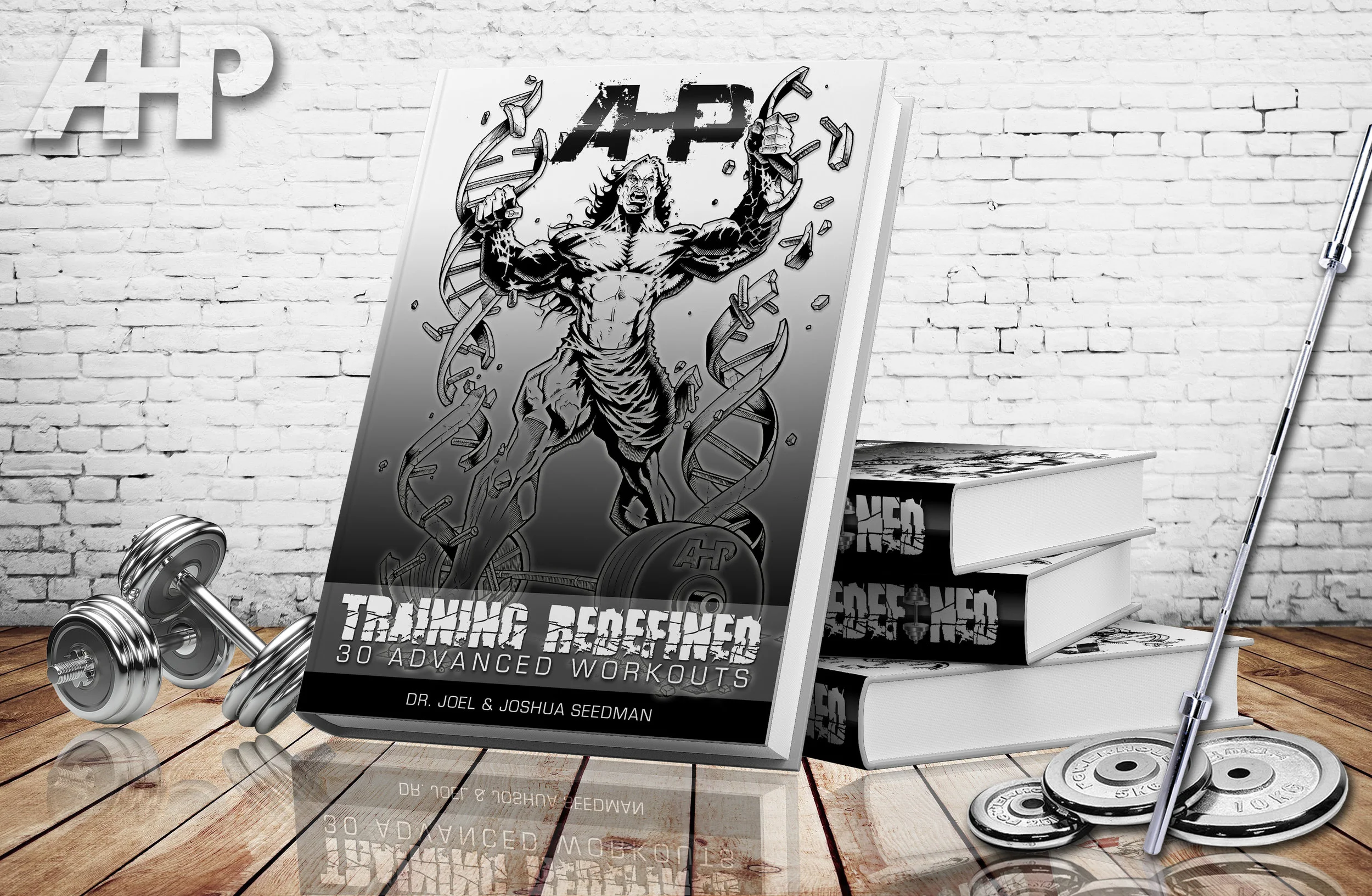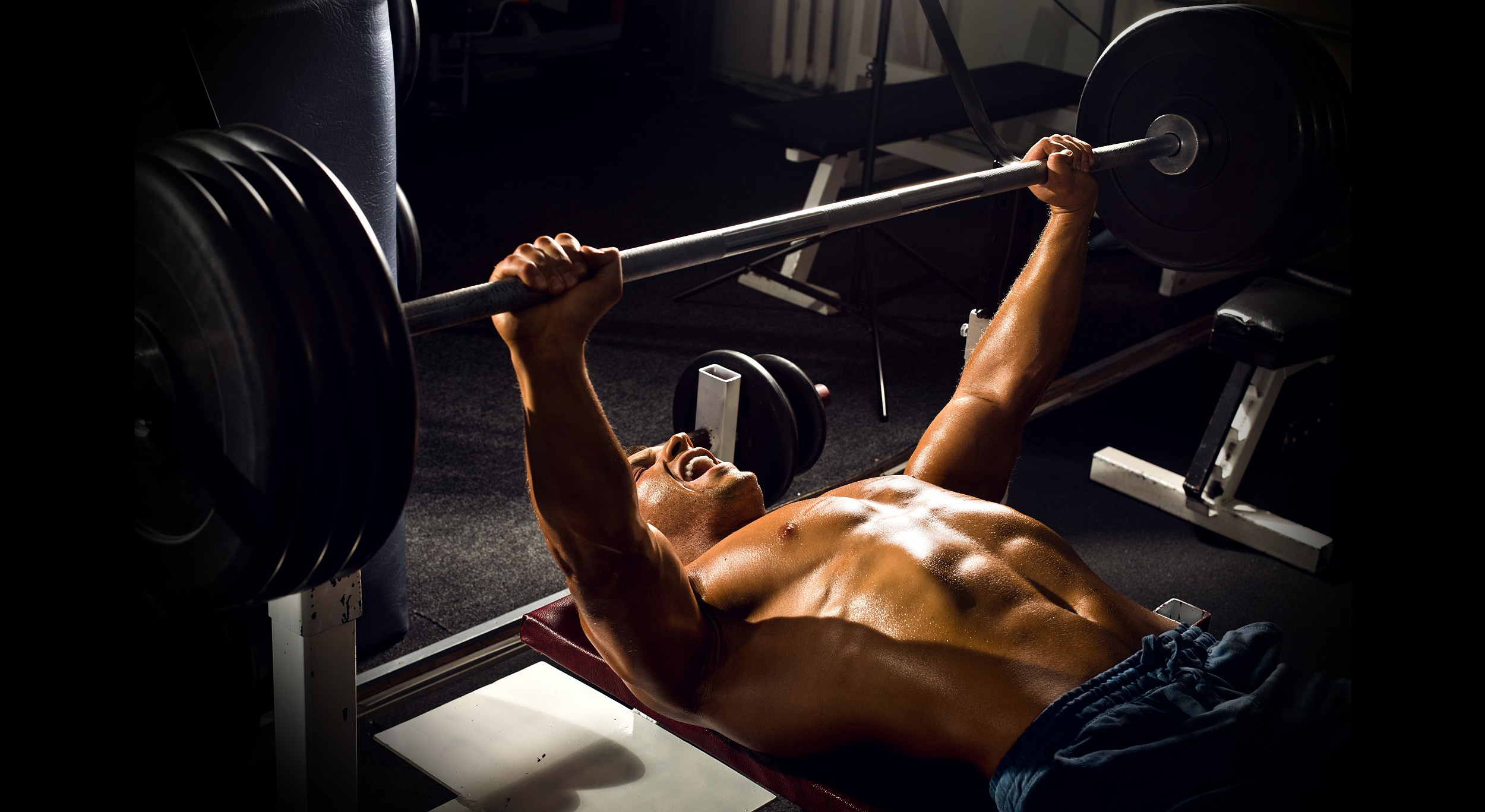The Best Dumbbell Squeeze Press You’ve Never Done
Dr. Joel Seedman, Ph.D.
When it comes to maximizing muscle growth, emphasizing the eccentric phase of the movement by slowing down the negative is one of the most effective techniques you can do. Overloading the eccentric phase of the movement by performing heavy negatives with supramaximal loads (heavier than 1RM) further enhances the hypertrophy-inducing stimulus. Over the last several years I’ve discussed quite a few of these techniques in some of my articles highlighting protocols such as the bilateral assisted negative accentuated method (BANA a.k.a. up with 2 down with 1), the power rack eccentric potentiation protocol (PREP), the pivot press, kBox training, the eccentric accentuated push press, compound isolation movements (i.e. skull crushers to chest press), partner accelerated kettlebell swings, and more.
With that said I like to experiment with a variety of exercises and combinations by overloading the eccentric phase of the movement when possible. Sometimes this is impractical without the aid of a competent spotter or fancy machinery. Other times it simply takes a bit of strategic muscle manipulation. One such movement I’ve recently been tinkering with to optimize eccentric overload is the dumbbell squeeze press. The dumbbell squeeze press is one of the most effective chest pressing exercises you can perform to induce functional hypertrophy in the upper body particularly the pectorals. By overloading the eccentric phase of the movement we can further enhance the potency of this chest building exercise. I refer to this as the dumbbell squeeze and spread press.
Here’s how to do that:.
Select a dumbbell load you would typically handle for your working sets of traditional flat dumbbell chest presses and set up in a t-bench position by assuming a hip thruster position. Perform the eccentric phase of the movement with a slow and accentuated eccentric squeeze press while also pausing in the bottom position (i.e. eccentric isometric). After pausing for 1-3 seconds in the bottom position of the squeeze press, allow the dumbbells to gently collapse to your chest then immediately shift the dumbbells to the sides of your torso so that your arms are supported by the bench (hence the reason for using the t-bench position). At this stage you should essentially be in a more traditional neutral grip chest press position. Drive the weights up in a standard chest press fashion, pause at the top, squeeze the dumbbells back together then repeat this cycle by moving back into the eccentric squeeze press. I recommend performing several sets of 3-6 reps as the intensity of these is inordinately high.
What makes this eccentric accentuated squeeze and spread press so effective is that it allows the lifter to truly overload the eccentric phase. For instance the squeeze press is typically a more challenging movement than traditional chest presses. In fact, most individuals will use 70-85% of the load they would typically handle on traditional chest presses. However, we also know that muscles can produce approximately 20-35% more force during the eccentric phase of a movement compared to the concentric phase.
For example, when performing dumbbell presses in a flat position I typically use 100-110 pound dumbbells. In contrast when performing the dumbbell squeeze press I typically use 75-90 pound dumbbells. With the eccentric accentuated squeeze and spread press I can use 100 pounds dumbbells throughout the duration of the set as shown in the video by simply adjusting my body position to match the strength of each position to the corresponding eccentric and concentric phase difficulty levels. As a result, the eccentric phase of the lift represents supramaximal eccentric loading as I end up using approximately 10-25% more load on the eccentric squeeze press portion of the lift than I would typically use for a squeeze press. However, the weight also represents the optimal load for maximizing the intensity on the concentric phase as I would typically use approximately 100-110 pound dumbbells for my heaviest sets during a traditional flat dumbbell press.
Contrasting Muscular Contractions
Besides providing a unique way to eccentrically overload the pressing muscles, the squeeze and spread press also provides the additional benefit of contrasting muscular contractions. Simply put, the squeeze portion of the movement with the dumbbells pressed together creates enormous levels of intramuscular tension particularly in the inner chest fibers due to the strong adduction component. In other words the tension is similar to that of a press and chest fly combined.
However, the squeeze press doesn’t provide the same degree of stretch as a traditional dumbbell press due to the hands being kept closer together. This also tends to minimize stimulation to the outer pectorals as this area typically responds better to a larger stretch. For a larger stretch to take place, the hands have to move around the torso. Fortunately the squeeze and spread press provides both types of contractions as there is both a strong adduction component as well as a strong stretch component (when the dumbbells spread apart). In other words it presents the best of both worlds for targeting the inner and outer regions of the pectorals.
While some research now suggests that it’s not possible to target the outer or inner portions of the pectorals, most bodybuilders and experienced lifters would disagree with this as it’s quite apparent when performing certain movements that the outer or inner portions can be more easily emphasized depending on the modality of the exercise. In addition, certain movements can produce more soreness on the outer or inner regions of the pectorals based on whether or not they emphasize the stretch or the contracted/adduction method. Unfortunately many researchers base this rationale purely on EMG findings which oftentimes only provide a very limited illustration of what is occurring within the muscles.
Quick Note on the Transition Phase
While the majority of the eccentric squeeze and spread chest press feels quite natural and self explanatory, the transition from the bottom of the squeeze press into the traditional press (the spread phase) can be a bit tricky at first. I recommend taking a session and performing several sets using significantly lighter loads (50-60% of traditional dumbbell loads) to familiarize yourself with the transition/spread phase. After a bit of practice it should become fairly automatic and transfer over to heavier working sets. One of the keys to locking this transition in involves keeping the core incredibly tight so you don't lose control of the weights.
Finally, don’t spend too much time transitioning during the spread phase. Instead, use a bit of momentum to help transition from the squeeze press into the traditional press as this tends to feel more natural. In fact, the transition should almost be one continuous motion rather than trying to pause in the bottom as this can cause the movement to stall out. In other words, attempting to transition too slowly and smoothly can cause the dumbbells to feel as though they get stuck in the bottom position. If it still doesn't make sense, watch the videos of Ben and I performing these as this provides the proper illustration of how they should look visually.
The Ultimate Combo: Pivot Squeeze and Spread Press
Several weeks ago I highlighted another unique eccentric accentuated chest press, namely the pivot press. Similar to the eccentric squeeze and spread press, the pivot press also allows the lifter to maximize eccentric overload by adjusting their body positions during both the eccentric and concentric phases of the lift. However by combining the pivot press with the eccentric dumbbell squeeze and spread press and turning it into one seamless movement we can maximize eccentric overload a step further. Essentially we're producing a double eccentric overload effect. Here’s one of my awesome bodybuilding clients Ben Lai showing how it’s done.
Because the intensity of the eccentric overload is so high during these I recommend keeping the reps to no more than 5 per set. Also shoutout to Ben for helping me refine this movement using the t-bench position. Got to love it when clients start helping you modify movements and making them even more effective.
A More Simple Alternative: Table Top Squeeze Press
Although the squeeze and spread dumbbell press described above is an incredibly effective mass building technique, some individuals may find it a bit awkward. If you have access to a competent spotter you can still overload the eccentric phase of the squeeze press without having to alter the movement pattern. I refer to this movement as the table top squeeze press as the dumbbells (when pressed together) create a perfect platform on which to rest a weight plate. Here I have one of my NFL running backs Marquell Beckwith performing the movement with 100 pound dumbbells and a 45 pound plate and my figure competitor Leslie Petch using 50 pound dumbbells and a 25 pound bumper plate. This represents the proper plate to dumbbell ratio for this movement.
To perform these, simply have your training partner or spotter place a weight plate on top of the dumbbells while you perform the eccentric phase of the movement then have them lift the load off immediately before transitioning into the concentric pressing phase. Make sure the spotter keeps their hands close to the weight plate to ensure it doesn’t slide off. With that said, the table top squeeze press is very conducive for teaching the lifter how to slow the movement down and control the eccentric phase as a means of ensuring the plate remains stable on top of the dumbbells. Just be prepared for some serious intramuscular tension in your chest, triceps, and shoulders followed soon thereafter by significant hypertrophy.
Manual Tension Method
If you’re not keen about placing a weight plate on top of heavy dumbbells you can also have a competent spotter provide additional eccentric overload by simply pressing down on the dumbbells manually. Here’s one of my NFL athletes Lawrence Virgil showing how it’s done with 120 pound dumbbells as we prep him for the NFL season.
In this video he’s simply demonstrating it using the standard t-bench and traditional neutral grip dumbbell chest press. However, the same concept can just as easily be applied to the squeeze press.
If you’re looking for a training program that teaches you how to incorporate unique chest presses such as these into your routine, check out my Complete Templates Series.

































































